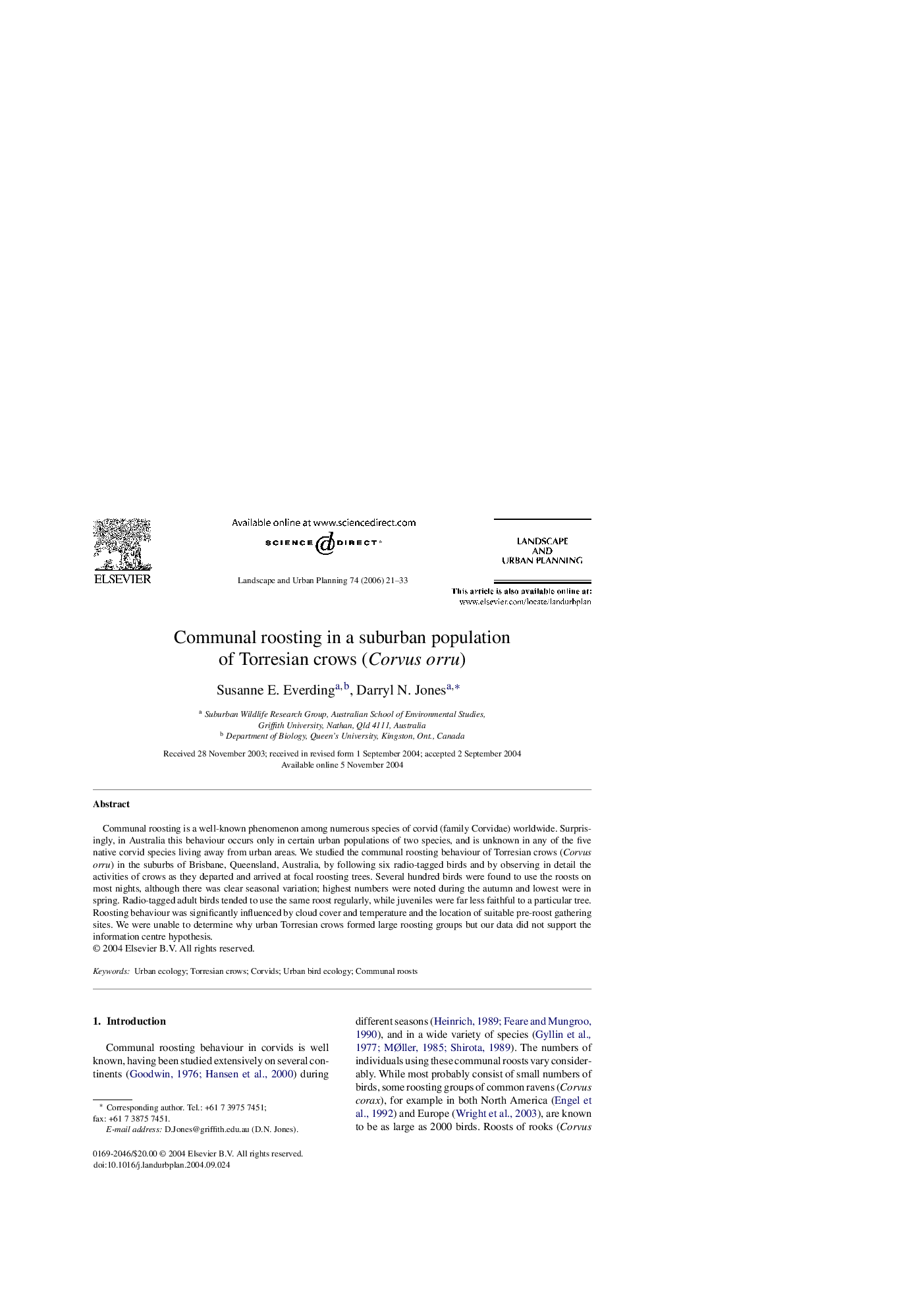| Article ID | Journal | Published Year | Pages | File Type |
|---|---|---|---|---|
| 1050708 | Landscape and Urban Planning | 2006 | 13 Pages |
Communal roosting is a well-known phenomenon among numerous species of corvid (family Corvidae) worldwide. Surprisingly, in Australia this behaviour occurs only in certain urban populations of two species, and is unknown in any of the five native corvid species living away from urban areas. We studied the communal roosting behaviour of Torresian crows (Corvus orru) in the suburbs of Brisbane, Queensland, Australia, by following six radio-tagged birds and by observing in detail the activities of crows as they departed and arrived at focal roosting trees. Several hundred birds were found to use the roosts on most nights, although there was clear seasonal variation; highest numbers were noted during the autumn and lowest were in spring. Radio-tagged adult birds tended to use the same roost regularly, while juveniles were far less faithful to a particular tree. Roosting behaviour was significantly influenced by cloud cover and temperature and the location of suitable pre-roost gathering sites. We were unable to determine why urban Torresian crows formed large roosting groups but our data did not support the information centre hypothesis.
